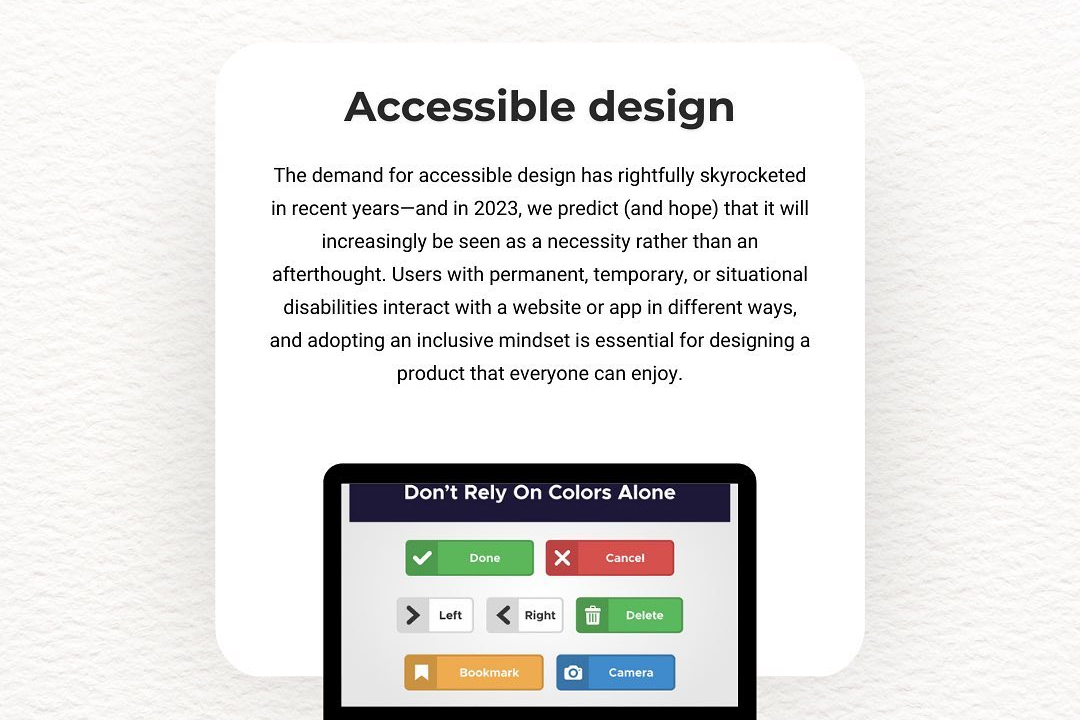For Loop Pattern Program in PHP
A for loop pattern program in PHP is a scripting technique that utilizes nested for loops to generat
For Loop Pattern Program in PHP
A for loop pattern program in PHP is a valuable tool for learning how to control repetitive tasks and generate visual designs using code. It helps developers understand nested loops, output formatting, and logic implementation by creating various shapes and patterns programmatically. This skill is useful not only for enhancing problem-solving abilities but also for developing dynamic, pattern-based features in web applications, such as header designs, data visualization, and graphical representations. Mastering these patterns deepens understanding of loop control structures and improves overall coding proficiency in PHP.
To Download Our Brochure: https://www.justacademy.co/download-brochure-for-free
Message us for more information: +91 9987184296
A for loop pattern program in PHP is a valuable tool for learning how to control repetitive tasks and generate visual designs using code. It helps developers understand nested loops, output formatting, and logic implementation by creating various shapes and patterns programmatically. This skill is useful not only for enhancing problem solving abilities but also for developing dynamic, pattern based features in web applications, such as header designs, data visualization, and graphical representations. Mastering these patterns deepens understanding of loop control structures and improves overall coding proficiency in PHP.
Course Overview
The “For Loop Pattern Program in PHP” course teaches you how to use nested for loops to create a variety of visual patterns and shapes in PHP, enhancing your understanding of loop control and output formatting. Through hands-on projects, you'll learn to generate complex designs, improve problem-solving skills, and write efficient, dynamic PHP code for pattern-based applications.
Course Description
The “For Loop Pattern Program in PHP” course teaches you to create complex visual patterns using nested for loops in PHP, enabling dynamic design generation and improving your coding efficiency.
Key Features
1 - Comprehensive Tool Coverage: Provides hands-on training with a range of industry-standard testing tools, including Selenium, JIRA, LoadRunner, and TestRail.
2) Practical Exercises: Features real-world exercises and case studies to apply tools in various testing scenarios.
3) Interactive Learning: Includes interactive sessions with industry experts for personalized feedback and guidance.
4) Detailed Tutorials: Offers extensive tutorials and documentation on tool functionalities and best practices.
5) Advanced Techniques: Covers both fundamental and advanced techniques for using testing tools effectively.
6) Data Visualization: Integrates tools for visualizing test metrics and results, enhancing data interpretation and decision-making.
7) Tool Integration: Teaches how to integrate testing tools into the software development lifecycle for streamlined workflows.
8) Project-Based Learning: Focuses on project-based learning to build practical skills and create a portfolio of completed tasks.
9) Career Support: Provides resources and support for applying learned skills to real-world job scenarios, including resume building and interview preparation.
10) Up-to-Date Content: Ensures that course materials reflect the latest industry standards and tool updates.
Benefits of taking our course
Functional Tools
1 - PHP Programming Language: The core tool used in the course is PHP, a popular server side scripting language designed for web development. Students learn how to write PHP scripts to generate patterns using loops and conditional statements. PHP’s syntax is beginner friendly, making it ideal for those starting their coding journey. The language provides built in functions that simplify string manipulations and output formatting, essential for pattern programs. Through hands on exercises, students become proficient in writing, debugging, and executing PHP code, building a strong foundation in web development and programming logic.
2) Integrated Development Environment (IDE): To facilitate smooth coding, students are introduced to IDEs such as Visual Studio Code, Sublime Text, or PHPStorm. These environments offer syntax highlighting, code suggestions, and debugging features that enhance learning efficiency. An IDE helps students write cleaner code, quickly identify errors, and understand code structure through visual cues. Using an IDE makes the process of writing and testing pattern programs more manageable, encouraging experimentation and creativity in pattern designing.
3) Text Editors: Along with IDEs, students learn to utilize text editors like Notepad++ for writing PHP scripts. Text editors are lightweight tools that provide basic editing capabilities with syntax highlighting and simple debugging features. They serve as an accessible starting point for beginners to understand code structure before transitioning to more advanced IDEs. Text editors make it easier to manage small projects and facilitate quick code edits during practice sessions.
4) Browser Developer Tools: Students are shown how to use browser tools such as Chrome DevTools or Firefox Developer Edition to view the output of PHP scripts executed on local servers. These tools help verify that patterns display correctly and assist in troubleshooting display or layout issues. By inspecting elements and console logs, students gain insight into how PHP generated HTML is rendered in browsers, bridging the gap between server side scripting and client side visualization.
5) Local Server Setup: Tools like XAMPP, WAMP, or MAMP are used to create a local server environment on students’ computers. These packages include Apache, MySQL, and PHP, enabling students to run PHP scripts locally without needing a live web server. Setting up a local server gives students a practical environment for testing and experimenting with pattern programs in real time, simulating real world deployment scenarios, and understanding server client interactions.
6) Debugging Tools: Basic debugging tools integrated into IDEs or available as standalone extensions help students identify issues in their pattern programs. By setting breakpoints, stepping through code, and inspecting variable values, students learn to troubleshoot effectively. Debugging enhances their problem solving skills and ensures the patterns render as intended, fostering a deeper understanding of control flow and logic consistency.
7) Version Control Systems: Introduction to Git and platforms like GitHub enables students to track changes and manage their PHP projects efficiently. Version control teaches best practices for collaborative coding, code backup, and project management. Students learn how to commit, push, pull, and resolve conflicts, boosting confidence in handling real world software development workflows and collaborative projects involving pattern programming.
8) Visualization and Output Formatting Tools: Students are introduced to tools that assist in formatting output, such as CSS for styling pattern displays. Although basic pattern programs primarily use plain PHP and HTML, integrating CSS allows students to enhance visual presentation and understand the importance of front end design in web development. This exposure broadens their skill set beyond PHP, enabling the creation of more engaging and visually appealing patterns.
9) Online Coding Platforms: Platforms like CodePen, JSFiddle, or PHP online editors provide environments for practicing pattern programs without local setup. These platforms offer instant feedback and easy sharing options, encouraging peer learning and competitive coding challenges. They serve as supplementary tools for reinforcing concepts learned in the course, making learning interactive and accessible from any device.
10) Educational Workbooks and Resources: Printed or digital manuals, tutorials, and coding exercises are provided to guide students through pattern programming concepts. These resources contain step by step instructions, best practices, and coding samples, acting as reference materials. Comprehensive documentation supports self paced learning, helps clarify doubts, and reinforces theoretical knowledge gained during the training program.
11 - Command Line Interface (CLI) Tools: Students explore PHP scripting through command line interfaces, enabling a deeper understanding of how PHP scripts run outside of browsers. CLI tools provide a quick way to test and execute PHP pattern programs, fostering a command line proficiency that’s valuable in server management and automation tasks. This exposure enhances flexibility and prepares students for advanced PHP development environments.
12) Pattern Design Libraries and Resources: Access to online repositories and libraries featuring code snippets, pattern templates, and tutorials helps students learn various pattern styles effortlessly. These resources serve as inspiration and starting points for creating complex patterns, encouraging experimentation and creative problem solving in PHP pattern programming.
13) Online Forums and Community Platforms: Engagement with developer communities such as Stack Overflow, GitHub, or dedicated PHP forums exposes students to real world troubleshooting, collaborative coding, and peer reviews. Participating in discussions fosters a deeper understanding of common challenges and solutions related to pattern programming, enhancing collaborative skills and community involvement.
14) Video Tutorials and Recorded Lectures: Supplementary video content explains complex pattern concepts visually, making learning more engaging and accessible. Visual demonstrations of pattern outputs and coding techniques help reinforce understanding, especially for visual learners, and provide a resource that students can revisit anytime.
15) Pattern Testing and Validation Tools: Specialized tools or scripts that automatically test the correctness of pattern programs enable students to verify their output against expected results. These validation tools promote attention to detail, improve debugging efficiency, and instill best practices in code validation in pattern programming.
16) Code Snippets and Auto completion Plugins: Utilizing code snippets and plugins within IDEs accelerates pattern development by offering ready to use code templates and auto completion suggestions. This accelerates learning, reduces syntax errors, and helps students focus on understanding the pattern logic rather than syntax details.
17) Cloud Based Development Environments: Platforms like AWS Cloud9 or Replit offer cloud hosted IDEs, allowing students to code, test, and share patterns from any device with internet access. These environments promote seamless collaboration, resource sharing, and remote learning flexibility, enabling a modern approach to pattern programming education.
18) Project Management and Workflow Tools: Tools like Trello or Jira assist students in planning, tracking, and managing their pattern projects systematically. Introducing project management promotes disciplined coding habits, iterative development, and documentation practices, all crucial for professional software development.
19) Security and Optimization Modules: Guidance on writing efficient, secure PHP scripts for pattern programs introduces students to best practices in code optimization and security considerations. This ensures that students not only produce visually appealing patterns but also understand how to create robust and high performing PHP applications.
20) Feedback and Assessment Platforms: Incorporating online quizzes, code submission portals, and automated assessments provides continuous feedback to students. This data driven approach helps identify areas for improvement, tracks progress, and ensures mastery of pattern programming concepts, leading to more effective learning outcomes.
21 - Mobile Coding Apps: Use of mobile applications such as PHP coding apps allows students to practice pattern programs on smartphones or tablets. This flexibility encourages learning on the go and accommodates diverse learning styles, making PHP pattern programming more accessible.
22) Certification and Badging Systems: Digital certificates and badges for completing modules or achieving milestones in pattern programming motivate students and recognize their skills. These credentials enhance student portfolios and employability, creating tangible incentives for course completion.
23) Interactive Coding Challenges: Timed coding exercises and hackathons focused on pattern problems stimulate problem solving skills and healthy competition. These challenges promote active learning, resilience, and the application of concepts learned in real time scenarios.
24) Real time Collaboration Tools: Platforms like Google Meet, Microsoft Teams, or Zoom integrated with shared coding sessions enable live coding, mentorship, and peer interaction. This facilitates immediate feedback, collaborative pattern creation, and community building among learners.
25) Data Structures and Algorithm Resources: Training on fundamental data structures and algorithms complements pattern programming, enabling students to design more complex and efficient pattern algorithms. This comprehensive approach prepares students for advanced software development tasks involving complex pattern logic.
26) Custom Pattern Generators: Development and use of custom tools or scripts that generate pattern code based on user inputs enhance understanding of pattern logic and automation in coding tasks. Students learn to develop reusable tools, fostering innovation and efficiency in their coding practice.
27) Feedback Analytics and Progress Tracking: Advanced analytics tools monitor student progress, identify common difficulties, and tailor instructional content accordingly. Data driven insights help optimize the learning experience and ensure mastery of pattern programming skills.
28) Learning Management Systems (LMS): Platforms such as Moodle or Canvas organize course materials, assignments, quizzes, and feedback seamlessly. An LMS provides a structured learning environment, facilitates communication, and tracks progress efficiently, supporting a comprehensive educational experience.
29) AI Powered Coding Assistants: Experimentation with AI tools like GitHub Copilot or similar AI coding assistants helps students learn pattern programming faster by suggesting code snippets and auto completions. This integration introduces students to cutting edge development tools in PHP programming.
30) Industry Relevant Case Studies: Exposure to real world projects, such as pattern design in web applications or graphical representations, helps contextualize pattern programming skills. Case studies bridge theory and practice, enhancing students' understanding of practical applications and industry standards.
Browse our course links : https://www.justacademy.co/all-courses
To Join our FREE DEMO Session: Click Here
This information is sourced from JustAcademy
Contact Info:
Roshan Chaturvedi
Message us on Whatsapp: +91 9987184296
Email id: info@justacademy.co












